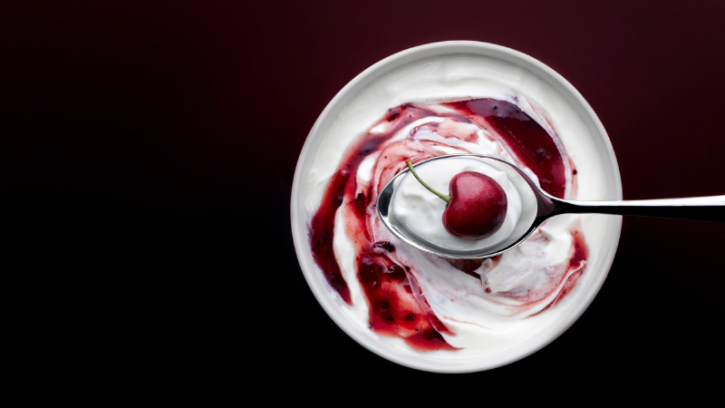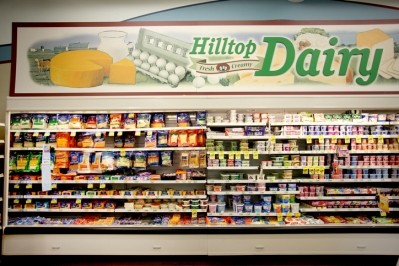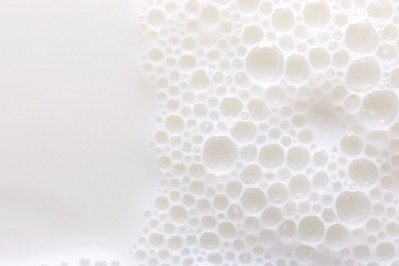Dairy innovations: IFF shares strategies for developing lactose-free products, low-sugar yogurts

"We really believe in the dairy industry. We [realize] that plant-based is growing, but dairy is also very important for us. And we are developing new innovations to help the dairy producers to overcome the challenges. ... North America is a market that [is] growing ... and we will be supporting customers there," said Rossana Rodriguez, global marketing director of cultures and food enzymes at IFF.
IFF boosts dairy capabilities with DuPont merger, predicts strong dairy demand
IFF has a range of dairy enzymes and cultures and a full portfolio of ingredients, including texturants, emulsifiers, proteins, fibers, flavors, colors, and sweeteners, to help develop dairy products. In 2021, IFF merged with DuPont Nutrition & Bioscience, further bolstering its dairy capabilities, Rodriguez explained.
"Three years ago, IFF and DuPont Nutrition & Bioscience got together, and that brought to IFF really a lot of dairy knowledge, more than a 100 years. We really know the application. ... We understand the equipment that our customers are using, we understand the technical challenges that they are they are facing, and we help them to overcome those challenges," Rodriguez said.
IFF also assists brands in finding new areas of innovation with its "proprietary trend and foresight capability called Panoptic," Rodriguez said. Panoptic shares a range of market trends and data on health, wellness, food, nutrition, sensorial experience, and sustainability.
Despite challenges facing the dairy industry from lower US production to global uncertainty, IFF still predicts strong dairy demand globally, said Morten Boesen, business unit leader of cultures and dairy enzymes. However, consumer dynamics around the globe are changing, providing opportunities for the overall dairy market to grow and expand with new offerings, he said.
“The dairy supply chain on a global level, I [see it] growing in the next many years, but you will see dynamics change,” Boesen said. “In Europe, there's a lot of focus on having less animal production, including also less milk production in certain countries, so here you will probably see milk production going down in certain places, whereas in many emerging markets, it will still be growing because there is still a huge population that is not getting the amount of milk products they would actually like.”
Consumers seek out dairy products with 'an extra benefit'
As more consumers become knowledgeable of lactose intolerance, CPG brands can capitalize on the trend by creating innovative lactose-free products that go beyond milk offerings to include lactose-free ice creams and yogurts, Rodriguez said. The global lactose-free dairy market was valued at $11.45bn in 2021 and is expected to grow by an 8% CAGR from 2022 to 2031 to be worth $24.36bn, according to Allied Market Research.
"Globally, the market of lactose-free products has been growing very fast from 2016-2022, more or less," Rodriguez said. "Now, we see that it is stabilizing, so it is still growing but not as fast. ... [It] will continue growing because indeed it is still a small market, and we see that lactose intolerance worldwide is pretty high."
Additionally, consumers also want products that give “them an extra benefit” (i.e., functionality), she said. In 2021, IFF released Nurica in the US, a dairy enzyme that uses the lactose present in milk to create galacto-oligosaccharides (GOS) fibers, which reduces lactose and sugar levels.
Addressing acidity challenges in creating a low-sugar yogurt
CPG brands also can develop lower-sugar yogurts to tap into better-for-you demand, but will need to consider some key formulation considerations, Boesen said.
“To have a well-tasting yogurt or fermented product, consumers typically do not like products that are too acidic, so a natural yogurt ... can be quite tart and quite acidic. One of the ways you compensate for that is to add fruit and add a lot of sugar, honestly, because then you balance that acidity, and you make it nice and tasty. So, one of the problems of reducing sugar in that case is you get the acidity back,” he added.
Reducing sugar in yogurt applications comes with challenges to the mouthfeel and texture, which IFF can address with its cultures portfolio, such as the YO-MIX PRIME range, Rodriguez noted. IFF can also reduce sugar in dairy applications by using dairy enzymes like Nurica, Boesen said.
CPG companies swapping out sugar with a non-caloric sweetener, such as stevia or monk fruit, might require additional flavors or flavor modulators to mask bitter off-notes, Rodriguez said.
"We at IFF also have a lot of expertise on how to [mask these] off notes with our flavors portfolio and flavor modulators. We always say, 'Each challenge that the customer has, we have a toolbox of solutions,'" she said.






















